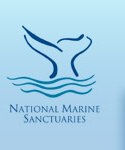We have enjoyed several visits to Spofford Pond School in the past, and are delighted to be back this year. It is a school that really enjoys teaching and learning geography. In fact, during our visit we are learning about a special project the sixth graders are involved in a very special project in Global Citizenship.
The school is being built in Grand Goâve, but the EarthView team has not yet been able to locate it on Google Maps. This can be for one of three reasons: 1) the satellite imagery used by Google has not yet been updated; 2) it is located near the town, but not right in it; or 3) we just have not looked carefully enough.
CHALLENGE: We hope that someone from Spofford Pond School can help us find the school, and provide the exact latitude and longitude so we can update this post. Whoever finds it can let us know using the COMMENTS link below this post. Hint: Look at the Orphanage Photos page on Be Like Brit for some visual clues.
View Larger Map to explore the area. How far is it from the capital city? While looking at Haiti, compare its forest cover to that of neighboring Dominican Republic. One important reason for the extreme poverty of Haiti is the destructive practice of forest removal by French colonizers over 200 years ago.
Early on the day of our visit, an earthquake occurred at 30.298°S 71.557°W. Notice that these coordinates are presented in degrees and decimal portions of degrees, rather than degrees-minutes-seconds. Still, the information provided is enough to figure out the country where this particular earthquake took place.
ANOTHER CHALLENGE: Where was it? What ocean is very nearby?
(The answer is at earthquake.usgs.gov. Don't click until you've tried to figure it out!)
In 2010 -- just a few weeks after the earthquake in Haiti -- this South American country experienced one of the strongest earthquakes ever recorded. It caused a lot of damage, of course, but much less than had occurred in Haiti. At the time, we posted an article providing several geographic reasons that the earthquake in Haiti causes so much more damage than the one in South America. Learn more about Haiti from the Help. Hope. Haiti. blog established at Bridgewater State University in the weeks following the 2010 Earthquake.
Several times during our visit, the Globe Lady discussed tropical rain forests with several of the classes. As she mentioned, it is sometimes surprising that rain forests are actually quite difficult places for farming. Although rain and warm temperatures are good for crops, the constant rain and heat that sustains the tallest forests actually makes it difficult to grow crops. The heavy rain leaches nutrients from the soil, and the constant warmth provides an abundance of crops, many of which love to eat crops! It is sometimes surprising to learn that the most productive biome supports very small human populations. The effect is visible from nighttime satellites images, on which rain forests look mostly empty.
The great variety of species -- biodiversity -- in tropical rain forests allows them to survive in this difficult environment. No insect is interested in all of the varieties of plants, and the complex layers of vegetation and epiphytes allow nutrients to be cycled above ground -- sometimes right through the bark of trees!
 As the the globe lady pointed out, rain forest biome is found in many locations around the equator, where the temperature and moisture conditions are the same. These include the rain forests of the Congo Basin, Indonesia, and the Amazon Basin. EarthView team member Dr. Hayes-Boh became a geographer because of his interest in the Amazon, and has written quite a lot about one particular part of the Brazilian Amazon -- the state of Rondonia.
As the the globe lady pointed out, rain forest biome is found in many locations around the equator, where the temperature and moisture conditions are the same. These include the rain forests of the Congo Basin, Indonesia, and the Amazon Basin. EarthView team member Dr. Hayes-Boh became a geographer because of his interest in the Amazon, and has written quite a lot about one particular part of the Brazilian Amazon -- the state of Rondonia.We also sometimes describe the Wedding of the Waters, where the Amazon River is formed from the Rio Solimões (which is cloudy with sediment from the Andes) and Rio Negro (which is clear and dark with the tannic acids of the northern tributaries). The confluence of these rivers in Manaus is considered by many to be the start of the Amazon River, which flows so slowly that the two rivers do not mix for many miles.
View Larger Map












































